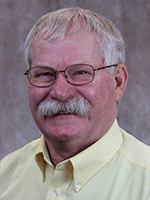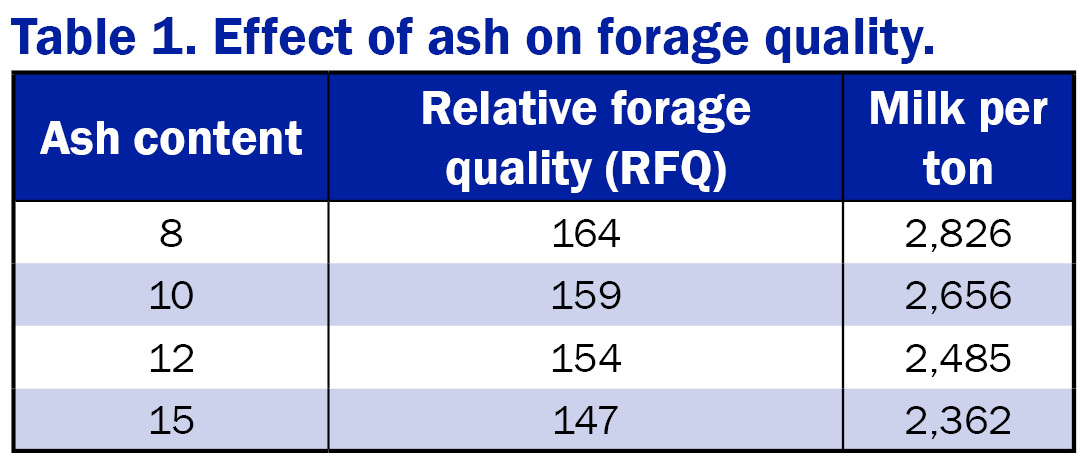
Ash content and forage quality – Jon Urness, Vita Plus
 By Jon Urness, Vita Plus national forage specialist
By Jon Urness, Vita Plus national forage specialistWe’re picking up a lot of dirt with harvest equipment, which is reflected in forage ash content, according to Dr. Dan Undersander, University of Wisconsin-Madison. The result of high ash content can mean a loss of up to 350 pounds in milk per ton of hay forage dry matter (DM).
According to Undersander, typical total ash content of alfalfa is 12 percent, with about two-thirds coming from naturally occurring ash within the plant in the form of minerals. The remaining 4 to 6 percent is picked up from dirt, and the impact on relative forage quality (RFQ) can be dramatic, as seen in table 1.

What causes elevated ash?
Aside from weather-related factors, such as rain splash, cutting height is key. Undersander said too many operators cut hay at 1-inch height to achieve maximum yield. While lowering cutting height increases yield by about a half-ton per acre per inch, RFQ will be reduced by at least five points, plus stand life can be compromised. When cutting alfalfa, a height of 2.5 to 3.5 inches is recommended. Grasses should be cut a half-inch higher.
Many operators use disc mowers because of their speed and efficiency. Other adjustments can be made besides height, such as the angle of the cutting blades. Angled cutting blades create greater ground suction and are effective on downed crop, but they also pull more dirt into the feed. Flat blades don’t pick up quite as much feed, but they create less suction. Some manufacturers now offer relatively quick change options for blades. As a general rule, Undersander suggested flat blades on drier soils, which are often associated with later-season cuttings, and angled blades on wetter soils, such as first crop and where downed crop is encountered.
Improper wheel rake height adjustments can also cause higher amounts of ash in the resulting feed. The combination of low cut and aggressive ground adjustment of a wheel rake can be disastrous. Cutting a little higher allows the crop to more easily rest on top of the stubble; adjusting the wheel rake accordingly can help too. Mergers will pick up less ash and retain more leaves than wheel rakes. Undersander suggested merging “to the middle.” In other words, merge two swaths to the top of a third in the middle rather than all to one side. The same can be said for rakes.
Realistic goals for ash content
Undersander suggested targeting 10 percent or less ash content in hay forages. Based on these suggestions, it seems a small short-term yield loss by cutting higher and raking/merging more carefully could yield big with higher RFQ and more profit in the long-term.
| Category: |
Equipment Feed quality and nutrition Forage Foundations Forage harvesting |

